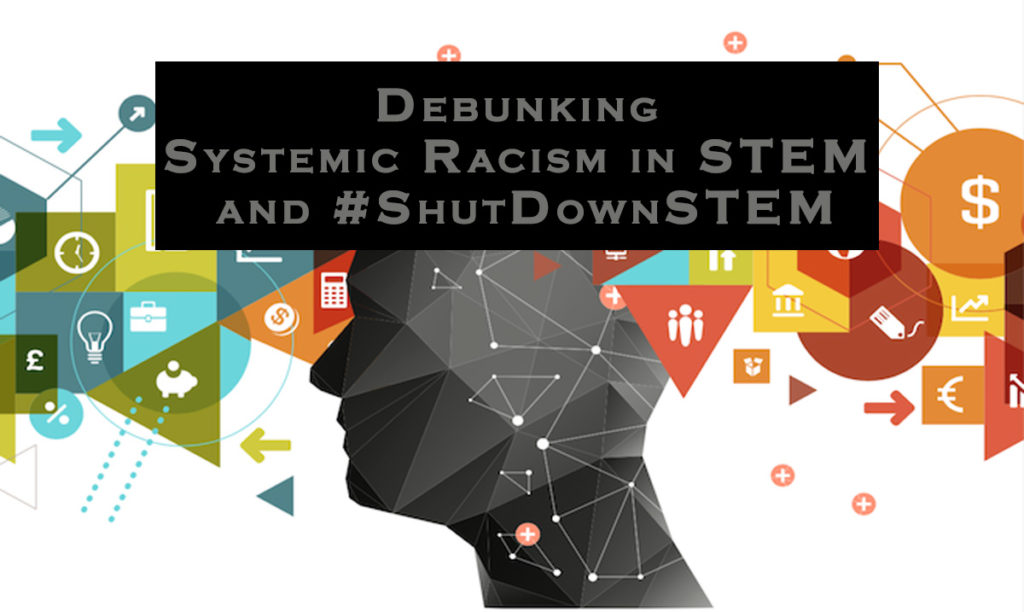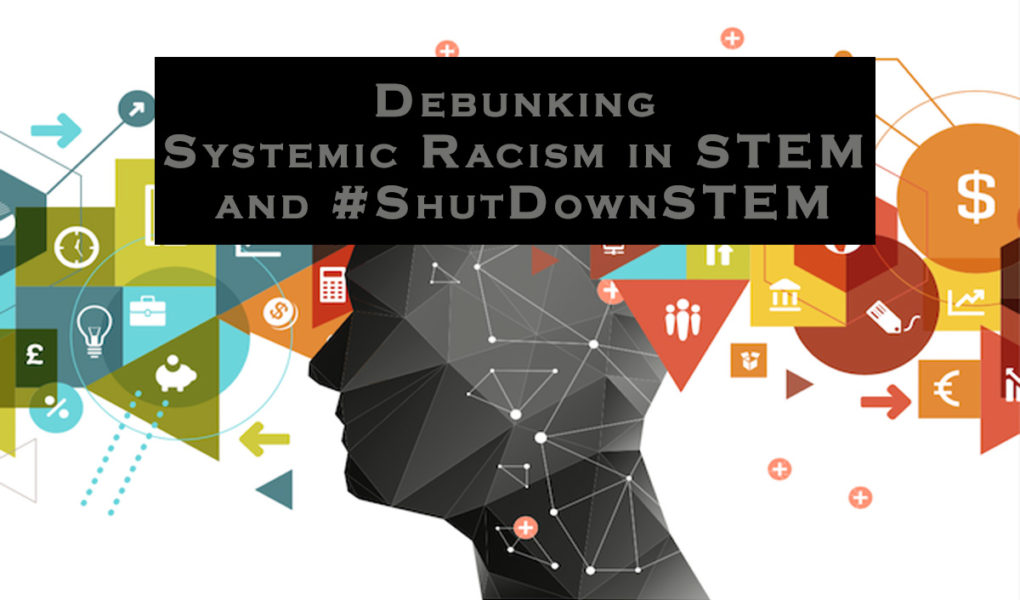
Do you remember when you were a kid; you went outside to play, and all your neighborhood friends were already outside in the middle of a game they were making up?
“Hey, guys. What’s going on?”
“Oh hey. You’re standing on the sidewalk and the sidewalk is lava. So if you stand on the lava, you’re dead. And if you go over into Mr. Bloomhouse’s yard it’s a snake pit and it’s filled with snakes and you’ll get bit by the snakes and then you’re dead. And if you go into the ditch, the ditch is a bottomless pit and if you go into the ditch then you’re dead.”
“Whoa, whoa, whoa. Look, I just got here. I don’t know anything about this or what you’re talking about. Basically, you’re saying anything I do results in death?”
That’s basically the way I look at how people are dealing with this race issue today. Anything you do, and anything you say will result in your “death.” Disagree, present new facts, present new data, cite your sources, death.
We live in a strange time, folks. In the midst of a global pandemic, riots have broken out all across the country. And just by flipping through the news channels, one would almost get the sense that we were all living across parallel universes. The news on one channel is saying one thing is happening, and the news on another channel is reporting quite the opposite. It seems that facts and emotions have all become twisted up into a gnarly, inebriated rat king. So, who do we turn to? It appears we have to do our own due diligence to rifle through this cacophony of opinions parading as reporting, rumors masked as facts, and agenda-driven lies.
Recently, I was on a forum containing people dealing in science education and saw many of them throwing their support to something called #ShutDownSTEM. This hashtag activism claim proposed there was systemic racism in the STEM fields and by walking out of work for one day it was going to draw attention to this injustice. “Let’s rally the troops and walk out for STEM justice.” To me, this sent up several red flags. How could a series of scientific fields all be inherently racist? Furthermore, what is the premise of the problem they are proposing and how does it bloom from this supposed systemic racism?
Here’s the deal. Years ago, I used to be in league with the Skeptics society. I dealt in all things involving the Center for Skeptical Inquiry, CSI-COP, Sketpics, etc., you name it, if it was about debunking conspiracy theories by using science, I was on board. I was never officially affiliated with them, but I went to the meetings, I subscribed to their magazines, and read all the books. I’m still a skeptic. Extraordinary claims require extraordinary proof as far as I’m concerned.
So, when I saw the #ShutDownSTEM that dealt with the single cause fallacy claim that the disparity in population representation within the STEM field was solely rooted in systemic racism, I became skeptical, not just of their claim but of what they were trying to accomplish.
Before I engaged with anyone on the forum, I went to the #ShutDownSTEM website to see if they had a mission statement, where the hashtag came from, what they aimed to do, and what was their goal. I soon found out the website had a vague proposition on systemic racism in STEM fields, and would basically call out a group of people (plural) as the sole cause of the under representation of minorities in STEM.
Now, to a reasonable person with common sense, that should set up some red flags. Especially if you’re scientifically minded. Attributing everything wrong with one root cause?
My skeptic lizard brain kicked into gear. I wanted to get to the bottom of these claims.
Here’s a proposition: What if I told you everything bad that happens is not always the direct result of racism?
What if I suggest that labeling everything bad as “racist” will water down the actual meaning and practice that is real racism?
What if I told you that if you wanted to find racism in everything around you, you would find racism in everything around you? As the proverb suggests, “To a man with a hammer, everything looks like a nail”
Let’s be honest, today we live in a time where almost everything is considered racist. The most innocuous things are currently being labeled as such.
Are you wearing hoop earrings? That’s racist.
Are you reading Dr. Seus? That’s racist.
Are you doing a fun southern accent? That’s racist.
Do you support the media darling, Justin Trudeau? Cause he’s racist.
Do you knit? You’re probably a racist.
Are you using math? That’s racist.
Meanwhile, the current witch hunt of racist items has added Magic: The Gathering, Instagram filters, the fleur-de-lis symbol, having cornrows in your hair, COVID-19, owning a gun, Devil’s Food Cake, the term “black sheep of the family,” silence, and disagreeing with anything racist as being, wait for it…racist.
To this extent, I would suggest if everything is racist then nothing is racist.
But we’re not done, we can add the STEM fields as being regarded as an example of institutional racism. Yes, the STEM fields. Science, Technology, Engineering, Mathematics (and sometimes they add Art to create the acronym STEAM).
But here’s the question: is it really?
The claim of #ShutDownSTEM is that there is a disparity in racial diversity in the STEM fields. For the creators of this hashtag movement, this disparity is directly attributed to “systemic racism.” So, again, the question is if there is a disparity in racial diversity in the STEM fields is it due to “systemic racism” or is the topic more complicated and nuanced without a clear root.
To start things off, we have to understand what “systemic racism” is and we have to especially understand the context of how this concept has evolved over time. After all, the meaning of the concept has changed just as the meaning of the word “racism” has been changing over time.
Yes, the word “racism” has been slowly changing. In fact, just recently Kennedy Mitchum, a college student from Missouri, wrote Mirriam-Webster so they could change the definition of racism to include a more broad and “systemic” understanding of the term. Mirriam-Webster replied saying that they would look into amending the definition because, of course, you always get your way when “racism” is the pressure that’s being applied.
Racism used to be defined as: the belief that all members of each race possess characteristics or abilities specific to that race, especially so as to distinguish it as inferior or superior to another race or races.
That’s nice, right? It’s a very clean definition. It encompasses anyone from any walk of life. It doesn’t say “this group can be racist” and “this group can’t be racist.” It’s not exclusory. Clean and simple.
Well, certain people didn’t like that, quite possibly because it didn’t play into their favor. Certain people wanted inoculation from being called racist while freely being as racist as possible. How did this happen and how did it change the definition of racism?
Patricia Bidol-Padva, a social scientist, attempted to change the definition of the word when she introduced the concept that “prejudice + power = racism.” She basically introduced that power was necessary to be racist. And ever since this was suggested, it has unofficially been part of the newly accepted definition of racism. Those that want amnesty in their own racist views have welcomed it. This new definition has been accepted onward since it grants a pardon to non-white people to be as racist as they want to be towards anyone else. That being said, it’s also a fruitful vessel for any white person wishing to grant themselves the signal of virtue.
It’s convenient, convoluted, and nonsensical to change the definition to include this because it delves into circular reasoning.
Imagine two people, Mary and Alyssa, in conversation. Alyssa, a person of color, utters a racist epithet about a white person passing by. Mary, also a person of color, calls Alyssa out on being a racist. Alyssa claims it is impossible for her to be racist, only prejudiced, because racism is prejudice plus power and as a “person of color” she lacks the power a white person has. Then, Alyssa takes it a step further and claims that reverse racism is not real. Mary corrects Alyssa, detailing that racism is a matter of prejudicial, racial superiority, and hostility—power or influence do not factor—and clarifies that, indeed, reverse racism does not exist. There is only racism. Alyssa reiterates that racism is prejudice plus power, and excuses herself of the label she deserves (again assuming the conclusion that a non-white person cannot be racist, that she is only prejudiced). This circular reasoning, if education, veracity, and sanity are to matter, should be disavowed, as should linguistic confusion, which deprives language of its efficacy.
So, what’s the problem with the formulation that racism is prejudice plus power and how does it relate to #ShutDownSTEM?
It commits the single cause fallacy which occurs when a complex problem is over-simplified without acknowledging the tapestry of joint causes.
And this is really the crux of my issue with #ShutDownSTEM. Their premise is that there is a problem and the root of that problem is simply a network of racist behavior.
There is a problem with the “prejudice plus power” stipulation that goes further. Power works if, and only if, white people are diligent members of a united, cohesive body, who possess the requisite influence and access (simply by virtue of their whiteness) to affect cultural and institutional structures. This is unreasonable, and exhibits the thought pattern of a racist: all people of a certain group (plural) are identical.
This is at the core of my belief that systemic racism does not exist—at least, not to the extent that it is currently believed and certainly not in 2020.
First, power is complex and operates vertically as well as horizontally. Skin color does not grant absolute power.
Secondly, I want to point out that in the “power plus prejudice” formulation there is no argument which illustrates the absurdity of its logical conclusion.
Let’s do a thought experiment with this formulation on the concept of theft, a crime of stolen property. In this illustration, theft is stipulated as a part of a system of oppression and occurs if, and only if, power and prejudice are determinants. That being said, because a person of color cannot benefit from the oppression, it’s impossible for theft to occur even if a person of color steals someone else’s possession. In this case, because power and prejudice are immaterial, the act is no longer theft but, instead, false borrowing. As a consequence, a non-white person could, in effect, steal a white person’s property. But the only recourse, if theft must include prejudice plus power, is to designate such a person a false borrower.
This illustrates the error in reasoning. Neither theft nor racism are contingent on power or prejudice.
Finally, does this new definition apply anywhere else in life?
By the new definition, it would state that a homeless white man has more power than Oprah Winfrey or Barack Obama.
So, that’s how the word “racism” has been evolving over time in such a way to benefit one group of people and to stifle another. It’s meticulous, it’s strategic, and it’s become quite effective in writing a blank check to only a select few who want to freely be racist and get away with it.
And what about “systemic racism”? How has its definition changed over time?
Well, the definition has become an amorphous term. It could mean that the institutions of today are racist. If this were the case, then these institutions would be publicly shunned. Or, it could mean that all inequality is explainable by racism. This is the route that #ShutDownSTEM has gone: racism explains all inequality.
(There’s that ubiquitous single cause fallacy again).
But is this the case? Is there a disparity in numbers of STEM representation or are there just fewer minority applicants into STEM fields? Is there a system in place which consciously or unconsciously is conspiring to keep minorities out of STEM?
After all the research that has come in, after all the numbers are reported, and after all the nuances have been looked at, no, there is no evidence to support that there is systemic racism in STEM.
The problem with the premise that the STEM fields are systemically racist doesn’t take into account the differences in incomes, differences in levels of single motherhood, personal decision making, or any other variables which could create the gaps we see today. #ShutDownSTEM falls short in considering all these areas. They simply say “it’s racist.”
And that’s the problem these days: Attributing racism to everything that is bad.
After I did some digging, I found that this whole movement was brought to the forefront by a group called Particles For Justice. Their hashtags also include ShutDownAcademia.
For starters, Particles For Justice was started by professor Alessandro Strumia. This professor came under fire for data mining, and misrepresenting claims to support his arguments.
Strumia was even suspended over a controversial presentation at CERN over gender diversity.
The hashtag of ShutDownSTEM itself was started by Brittany Kamai whose Twitter feed consists mainly of social justice warrior diatribes, retweets, and memes which all attempt to find racism where they don’t exist. To a person with a hammer, everything is a nail.
From their public personas, Strumia and Kamai aren’t objective on the matters of racism and sexism.
Any rational human being can see that there is a problem on their website and in their mission statement. Taking a look at the website, the basis of their movement rests in the disparity in numbers of black representation in STEM fields. I point out black disparity since Asians in STEM fields are overrepresented but they don’t bring that up. Their website specifically points to black representation even though Hispanic and Latino representation is also slightly under represented. But they don’t seem to care about that. But we’ll get into the difference between black and Hispanic representation in STEM a little later on since it’s very telling of what #ShutDownSTEM seems to be biased against.
And, by the way, saying that #ShutDownSTEM is supported by Nature, AAAS, and LIGO as a reason you should also be throwing in your support with them, is just an argumentative fallacy called appeal to authority. If all you have are authorities, and everyone just has to “take their word for it” without any other evidence to show that those authorities are correct, then you have a problem.
So, let’s take a look at their website to see what it has to offer.
First off, all mentions of “Blacks” are in capital letters. All mentions of “whites” are in lower case. This isn’t just a typo, it’s all throughout the site. This could simply come down to a style choice which journalists are currently opting for. Their claim is that “Black” refers to ethnicity while “whites” refers to a general term of white people from all backgrounds. That is to say, “Blacks” don’t come from all different backgrounds. I guess they don’t care to lump in African Kenyan, African Surinamese, African Caribbean, and so on. Are they attempting to exclude all backgrounds that reside outside the United States by using “Blacks” in uppercase? They’re not clear. After all, the website attempts to not use “white” in the general term but to call out the specific group of all people as owing a debt to the culture. According to them, if you just came to the U.S. from Europe, South Africa, wherever and are white, you still hold some responsibility in the arena of racial injustice.
Actually, According to CMS (Chicago Manual of Style), when referring to racial categories, use whites or white people, blacks or black people, both of which are written in lower case (Chicago Manual of Style, 16th edition, 8.39, p. 402.). However, according to APA, racial and ethnic groups are designated by proper nouns and are capitalized: Black and White (APA Publication Manual, 6th edition, 3.14, p. 75.).
So, apparently, they want to do away with the APA and CMS and develop their own rules to make one look important and the other less important. Let’s be honest, this is a far-Left tactic—one of many—that has been going on, in one form or another, for a long time. In my opinion, it’s all about gaining some form of power. That’s what it’s all about. The same group that labels wet socks and snow globes as racist now wants to have “Blacks” capitalized and “whites” in lower case. No, I’m sure there’s no ulterior motive behind that.
Furthermore, they go on to propose on their site: “Our research papers turn into media releases, books and legislation that reinforce anti-Black narratives. In STEM, we create technologies that affect every part of our society and are routinely weaponized against Black people.”
This is vague and doesn’t cite examples. Research papers and technologies are weaponized against blacks? I’m guessing they’re proposing that only technology and research that comes out should only have a positive spin, reflecting an emphasis on feelings over facts. But I don’t know what they mean since they didn’t give any examples or cite any sources.
They continue: “Those of us who are not Black, particularly those of us who are white, play a key role in perpetuating systemic racism.”
To whoever wrote this, ask yourself: when you talk about “white” are you talking about a group of people, plural? Are you talking about a collective group with singular characteristics?
If you are, then congratulations. You are a racist. It doesn’t matter what kind of linguistic hoops you want to jump through to grant yourself immunity, you are indeed a card-carrying member of the Scarlet R society.
And herein lies the rub: they specifically point out that any perceived problem in the STEM fields should be pointed to white systemic racism. That “whites” in particular are to blame. They boil down everything to one central cause. Do you see a pattern here?
If you’re still with me on this, after everything you’ve read, if you don’t see a problem in taking a perceived injustice and exclusively blaming it on a group of people (plural), you’re lost.
There’s a problem with their premise, there’s a problem with their approach, and there’s a problem with their outcome. It’s wrong from top to bottom.
But the website isn’t finished there. They further go on to say, “Direct actions are needed to stop injustice. Unless you engage directly with eliminating racism, you are perpetuating it.”
And this, folks, is your bully tactic. This is the appeal to fear fallacy, ‘either you are with us 100% or you are the enemy, racist, and should be destroyed.’
Got that, everyone? Agree with them 100%. Don’t question their motives. Don’t question their premise. Agree with them 100% or you are done. Are you calling them out as racist? No, no, no. They’re not racist…you’re racist. That’s how it works. This is why I don’t support them. This is why I won’t support people who support them or any institution that bows to this bully tactic. It is mob mentality. It is collectivism. It is group think. Go against the hive mind and feel their wrath.
Now, aside from this blatantly racist website with its overtly racist jargon and mission statement, let’s actually take an objective look at what might be the cause for the disparity in numbers of black representation in the STEM fields.
One of the examples given to me to “prove” systemic racism in STEM fields is a study by the Pew Research Group. The study finds that Blacks (13% of the population) make up 11% of the workforce but only 9% of STEM jobs. Hispanics (17% of the population) comprise 16% of the workforce but only 7% of STEM jobs. Asians are over-represented with 13% of STEM jobs but only 6% of the US population.
Are we confusing disparity of representation with systemic racism or are we now changing the definition of racism yet again?
This study tells me there’s a larger disparity in Hispanic representation and that the disparity in black representation doesn’t seem to be that great. Where’s the hashtag activism for the Hispanic population?
The study also shows that women comprise 50% of the STEM jobs. Are we to believe we solved sexism but racism is still running rampant in the workforce?
According to the study, 69% of STEM jobs are occupied by whites, 17% are Asians, 9% are blacks, and 7% are Hispanic. Actually, by these numbers you can see that when referring to blacks and Hispanics, blacks are over-represented since Hispanics make up more of the work force.
In the same article given to me to “prove” systemic racism it says “Over the past 25 years, the STEM workforce has become more racially and ethnically diverse, echoing increasing diversity in the workforce during that period. In 1990, 83% of STEM workers were white, 6% were Asian, 7% were black, and 4% were Hispanic.”
To the person who sent me this article, did you even read it?!
If Asians are over-represented across all STEM fields then where is the systemic racism there? If blacks are over-represented in their demographic over Hispanics then maybe we should look at other causes for this supposed, intentional, institutional disparity?
It has become obvious to me that this whole argument is being trumpeted by people who simply want to find racism in all things. Add it to the list of hoop earrings, card games, socks, old TV shows, and now STEM. All things racist in all places. But, according to them, if there’s any disparity in the numbers of representation it can’t be anything else but racism. Right?
Actually, no. Let’s take a look at the actual numbers and take personal choice into consideration.
Since this whole discussion today is pretty much 100% concerned with blacks, let’s look at how they choose which jobs to go into, which fields to major in while in college, and address the issue if they are being hired or not hired based on their race.
More African-Americans are going to college than ever before. But according to new research from the Center on Education and the Workforce at Georgetown University, African-American college students are more likely to pursue majors that lead to low-paying jobs. And over time these occupational choices contribute to the wealth and opportunity gap between whites and blacks that spans generations.
African-Americans make up only a small percentage of some of the highest-paying of majors, including those in STEM and business. They’re only 8% of engineering, 7% of mathematics and 5% of computer science majors. Worse, even those who do major in high-paying fields, typically choose the lowest paying major within them. For example, the majority of black women in STEM typically study biology, the lowest-paying of the science discipline. Among engineers, most black men study civil engineering, the lowest-paying in that sector.
In contrast, black college students are over-represented in service-oriented fields: humanities, education and social work. One of the lowest-paying majors common among African-Americans with a bachelor’s degree is early childhood education.
(The following is based on information provided in previous links).
Another reason for the disparity is merely personal choice. Many service-oriented majors lead to careers that are vital to political and social movements in poor, minority communities around the country. And the study indicates that African-Americans who have strong community-based values enter into college majors that reflect those values. Despite comprising just 13% of the population, African-Americans are 20% of all community organizers.
Another thing the study finds, is that whether or not they choose to go into STEM fields is up to choice. Many service-oriented majors lead to careers that are vital to political and social movements in poor, minority communities around the country. Many minority college students switch majors away from STEM fields and as a result there’s just not as many resumes applying to STEM related jobs.
When it comes to the disparity in pay, the study finds that the majority of blacks earn their degrees from 2-year colleges. There’s a $4 million difference in earnings between a 4-year degree in early childhood education and a 4-year degree as a petroleum engineer over an entire career.
So, what’s the solution? Is it walking out of your job on a given day as #ShutDownSTEM suggests? After all, I don’t want to put all these stats and numbers out there without offering up a solution.
According to the Center on Education and the Workforce recommends aggressive counseling of minority students early on, encouraging young African-Americans to develop careers in tech, business and STEM that incorporate elements of community service. After all, a black business executive could still be a community advocate by providing jobs and small business loans.
Ok, but what about those wanting to enter into the STEM fields? Are they discriminated against based on their resumes and names?
Again, no.
A new study shows that resumes with black, white, and Hispanic names are treated the same.
This updates a previous study ten years prior that some will cite as evidence of systemic racism and discrimination in the hiring process based on a person’s name in their resume. Yes, they exclude the new study and rely on the decade-old, data flawed study which still backs their claim. This previous study used first names to see who would get called back from their resumes. However, this showed more of a bias towards economic class rather than race.
The new study updates and changes the approach, placing the emphasis on last names. This attempts to eliminate economic class and tries to focus solely on last names that are specific to certain races. When they did this, they found that there was virtually no difference in call-backs by race.
There’s no denying that several decades ago there was in fact systemic racism. And by that, I mean, institutional racism that was supported or overlooked by the state. There’s no doubt that the state said it was okay to segregate schools, have different bathrooms and drinking fountains, who you could marry, etc. But currently, the U.S. has more laws in place to protect people from discrimination than any other country.
According to World Population Review, the U.S. along with the U.K. and Scandinavian countries are at the top of the list of the least racist countries. But for some reason, protests and riots have broken out over just how racist the U.S. and U.K. are perceived to be.
Is there evidence that systemic racism exists in STEM? The answer is no.
Is there evidence to suggest minorities are being discriminated against by their resumes? No
Can you boil down diversity disparity in STEM fields to simply “systemic racism”? No
Is the topic more nuanced and complicated and should it be looked at like adults without name calling, race baiting, and politicizing? Yes
There seems to be a divide between how the Left and the Right deal with problems.
If there is a perceived problem, the Left usually wants to either throw money at it or boil it down to a single cause and then attack the supposed single cause. The Right will acknowledge a problem exists but will then look at the root of the problem and come up with a way to address it over a long period of time.
If you want to see a solution to the representation disparity in the STEM field I don’t think it can be solved or even addressed by grand standing, meme sharing, and name calling. I think the responsible and more realistic approach is to look at what the Center on Education and the Workforce recommends. Again, I’ll repeat it here: aggressive counseling of minority students early on, encouraging young African-Americans to develop careers in tech, business and STEM that incorporate elements of community service. After all, a black business executive could still be a community advocate by providing jobs and small business loans.
That’s the long game and it’s not an easy solution. But complicated matters such as this don’t have simple solutions, nor do they have simple causes, do they?




